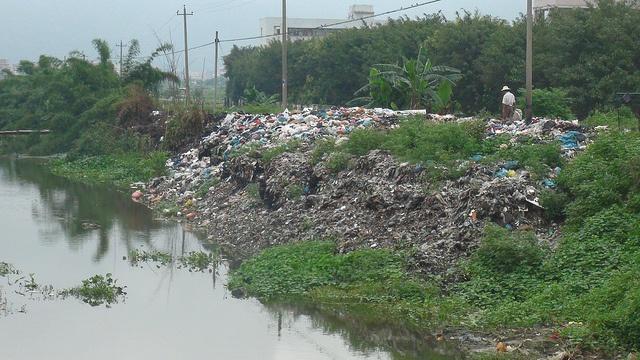
By Clotilde Pallier
Since the '50s, electronic technologies started to make our life more convenient. Nowadays products are endlessly upgrading, and quick obsolescence has become the norm. In its global report E-Wastes Monitor 2014, United Nation University estimates the total amount of e-waste to total 41.8 million tons. And it is getting even bigger as developing countries start to equip even more quickly. The total amount of e-waste produced is expected to reach 50 million tons in 2018, nearly 50 percent more than in 2010.
Now the question is: What happens with those million tons of e-waste after they have been discarded?
Well, four options exist:
Within those options, scenario three accounts for 10 to 30 percent in different EU countries and scenario four isn't measurable, but is definitely sizeable. This shows that a significant amount of waste from developed countries is actually ending up in developing countries to be treated.
For those flows, traceability and final treatment method are still very opaque. In reaction to that and in order to prevent ecological disasters linked to illegal wastes treatment Guiyu, China, reinforced its regulation in 2010 to forbid the importation of e-waste from other countries. It has to be noticed that some illegal channels still exist through Hong Kong.
But that is not the only issue on the agenda. China will also have to deal more and more with its domestic e-waste production. The country generates up to 6 million tons per year, the second highest amount in the world after the U.S. Government is taking the problem very seriously and in 2013, they managed to have 28 percent of the country's e-waste recycled in state-of-the-art facilities, which is actually higher than the U.S. and Canada (12 percent) and Australia (1 percent).
Local civil society is not resting on the topic either. NGOs such as Roots and Shoots are developing school education programs on waste recycling, together with government. This also leaves space for social enterprises to set up creative initiatives such as Netspring. Its Green IT classroom program aims to tackles environmental pollution by e-waste while providing IT education to under-privileged children. In practice, the organization refurbishes and lends obsolete computers from companies to rural or migrant schools in need of IT material. After three years, computers are dismantled in official factories. Since 2012 the program has enabled the recycling of more than 20 tons of e-waste and reached more than 20,000 kids.
Let’s hope other ingenious models will be developed in the near future!
Image credits: 1) Flickr/baselactionnetwork 2) Baldé, C.P., Wang, F., Kuehr, R., Huisman, J. (2015), The global e-waste monitor – 2014, United Nations University, IAS – SCYCLE, Bonn, Germany.
Clotilde Pallier originally majored in Food Science and worked for several years as a Quality manager in retail industry. During the last years she discovered a growing interest in sustainability and CSR topics. That is why she recently decided to make a turn in her career working in social entrepreneurship in China.
TriplePundit has published articles from over 1000 contributors. If you'd like to be a guest author, please get in touch!














